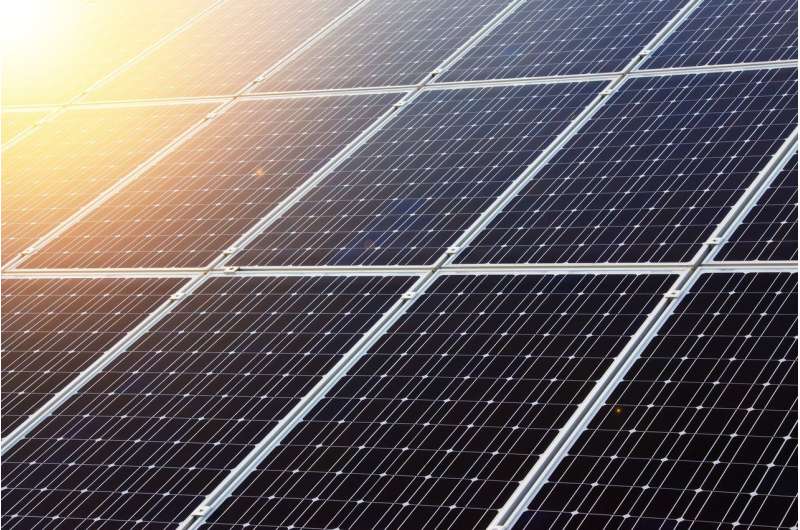Credit: CC0 Public Domain
A trio of researchers at École Polytechnique Fédérale de Lausanne has found that solar panels could provide a lot more power for Switzerland than has been previously thought. In their paper published in Proceedings of the National Academy of Sciences, Annelen Kahl, Jérôme Dujardin and Michael Lehning describe their feasibility study of solar panel use in mountainous Swiss regions using satellite data.
As part of Switzerland's Swiss Energy Strategy 2050, the government has decreed that all of the country's nuclear power plants will be phased out when their useful life has ended—and no new plants will be built to replace them. Furthermore, all new power must come from renewable resources. Some might suggest this is a risky move, considering that currently, the country gets approximately 35 percent of its power from nuclear plants and just 5 percent from renewable resources. But the country might have a previously unnoticed advantage—its high, snow-covered mountains. In this new effort, the researchers report evidence that such mountains could be used for generating a lot of electricity using solar panels.
The researchers note that solar panels are more efficient when cold. They are also more efficient when placed at higher elevations—this is due to the thinner atmosphere, which reflects back less of the energy from the sun. They further note that very high mountains, prevalent in Switzerland, poke above the clouds thus offering more hours of sunshine. Also, snowcapped peaks tend to bounce some solar energy onto other mountains.
The researchers took all these factors into account and then compared them against satellite imagery of all of Switzerland, noting places that would benefit most from the placement of solar panels. They found that such panels could cut the country's wintertime renewable energy deficit in half. They further note that in practice, their estimate is likely to be low, considering the pixel resolution of the satellite data did not take into account people on the ground—local customizations would allow for ideal solar panel placement, taking into account local conditions.
More information: Annelen Kahl et al. The bright side of PV production in snow-covered mountains, Proceedings of the National Academy of Sciences (2019). DOI: 10.1073/pnas.1720808116
Journal information: Proceedings of the National Academy of Sciences
© 2019 Science X Network























